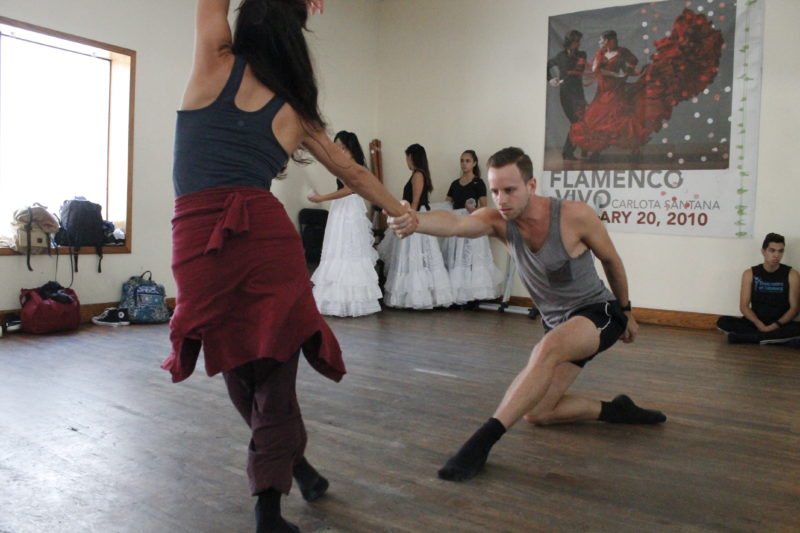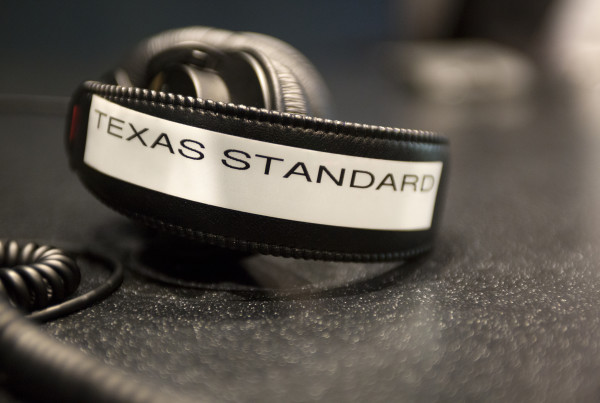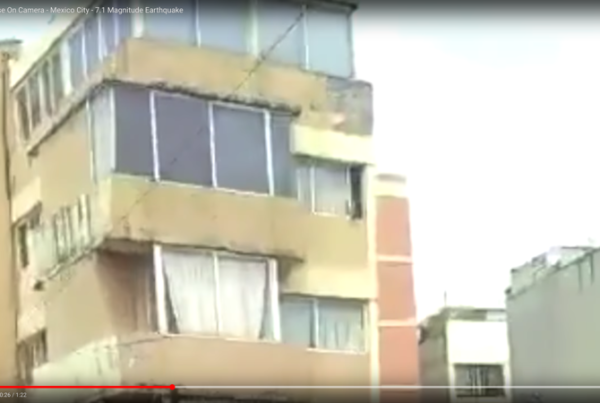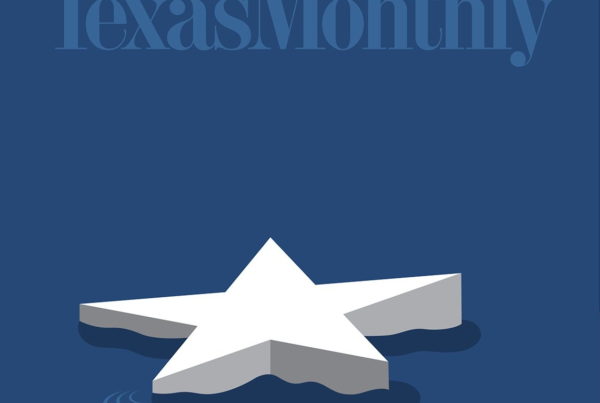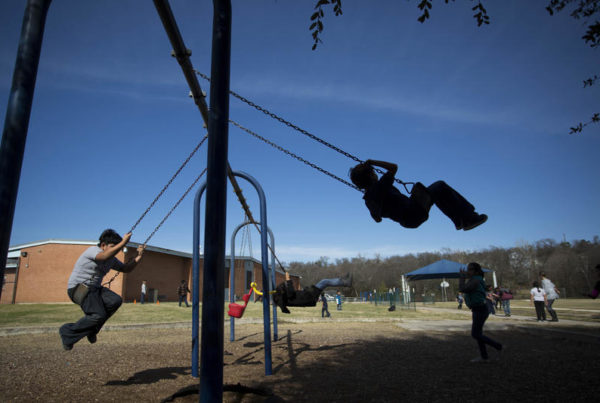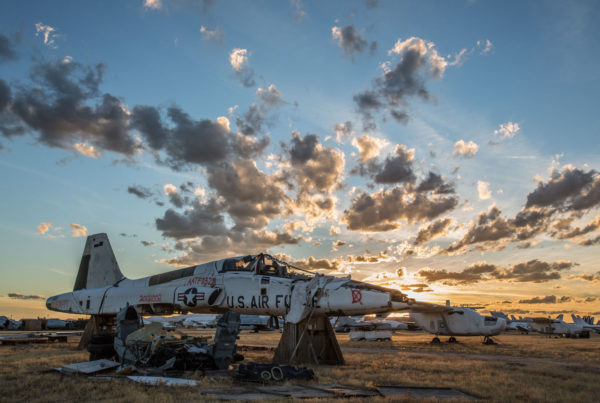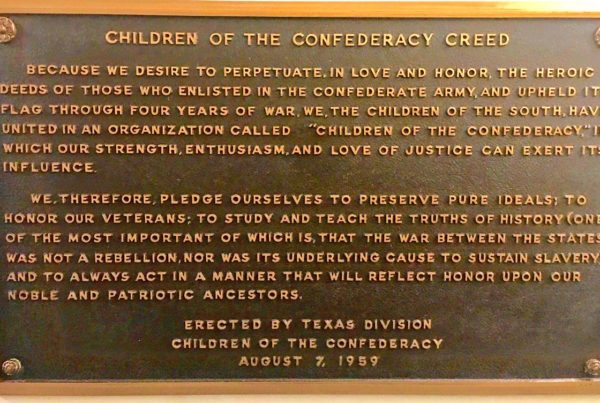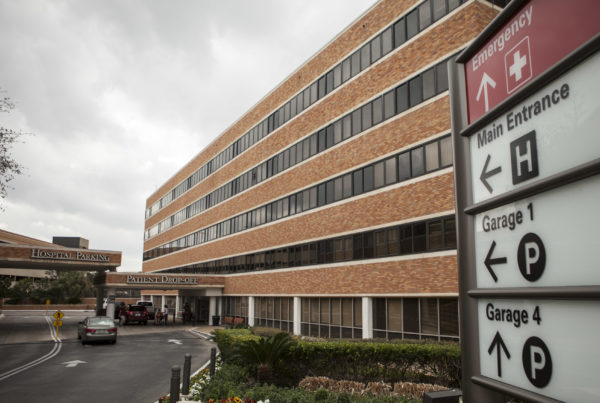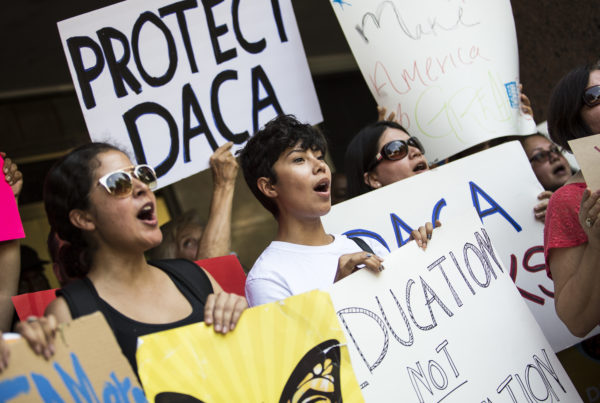Folklorico dancing is a big thing in south Texas border culture. Even if you’re not from the border, you may have experienced this style of dance – originally from Mexico – where the women dancers wear huge embroidered skirts that flow in the air, like flapping butterfly wings.
Foklorico has now migrated to New York City, creating something called fusion – a mix of folklorico and ballet. This is the story about a Texas woman from the Rio Grande Valley, now in New York City, who mixes those dance genres.
Eight dancers take the stage in a small room. They begin practicing a routine and keep tabs on their moves on the wall-to-wall mirror in front of them. Their moves are precise. And yet, they practice them over and over again.
Andrea Guajardo from Edinburg, Texas is the founder of Ballet Nepantla, the new fusion dance company. She says the song is called La Bruja –“The Witch.”
“La Bruja…is from the region of Veracruz where women walk in wearing the long beautiful white skirts and they dance balancing lit candles on their heads,” Guajardo says.
Even though I speak Spanish, the word nepantla is new to me. I learn it’s because the word is actually in Náhuatl, the indigenous language of the Aztecs.
“[It’s] specifically a Náhuatl term for an in between space, or a certain in betweenness. It can be translated to cultures. In terms of Ballet Nepantla it is more specifically translated to the in betweenness of cultures within the realm of dance,” Guajardo says.
The dance routine for “La Bruja” is precisely that, a combination of traditional folklorico routines where female dancers in white skirts carry lit candles on their heads. Then you add a complimentary ballet routine that moves among the folklorico dancers. And it’s a whole new ball game
“Originally I decided let’s make this a contemporary ballet duet and what ended up coming to was I was like, let’s throw some girls in there with folklorico dancers and some candles on their head,” Guajardo says. “Why not? Let’s make this much bigger, let’s make this reach its full potential.”
Guajardo was married to the idea, but she needed her dancers to buy into it too. And that’s what Guajardo did. She merged the two dances. But when she started the company, the dancers came from different style backgrounds.
“Some of our folklorico dancers are training in ballet, maybe not the first time, but every day we do ballet warmups and they’re not used to all this,” she says. “And whereas our contemporary dancers it’s the first time ever they’re seeing folklorico and they’re doing full choreographed dances.”
Creating Ballet Nepantla has also given Guajardo the opportunity to bring some talent from the Rio Grande Valley to the Big Apple.
“I’ve always seen such talent that has just been waiting to get out and I’m bringing kids up because they need to be doing stuff like this. They need to be traveling and see what it’s like dancing among other professional dancers,” she says.
One of the dancers from Edinburg trained in New York City all summer. Guadalupe Garza is 18 years-old. He comes from a folklorico background.
“It’s definitely beautiful when people see dances from south Texas, where folklorico is more known,” Garza says. “It’s just really pretty to see it in other cities and other people come and are like ‘wow that’s beautiful I’ve never seen anything like it.’”
Twenty-two-year-old Francesca Iannelli is another dancer from the Valley.
“It’s really fun getting to bring part of our culture, what we grew up with, to a completely different city so that everybody else can experience the culture that we’re coming from,” Iannelli says.
Nepantla’s debut was last weekend
Guajardo hopes that every time Nepantla performs, the show will counter unflattering narratives about Mexican and Mexican-American communities. She hopes the beauty of the dance will be like a bridge that connects people who are in this – Nepantla – this “in between” of worlds and spaces. In New York City.


